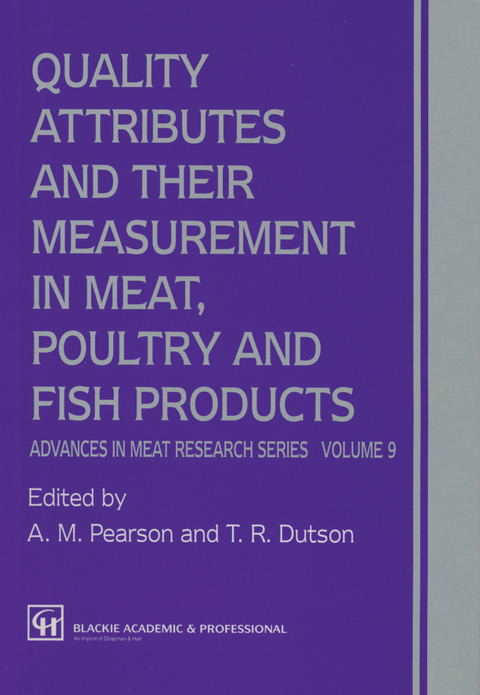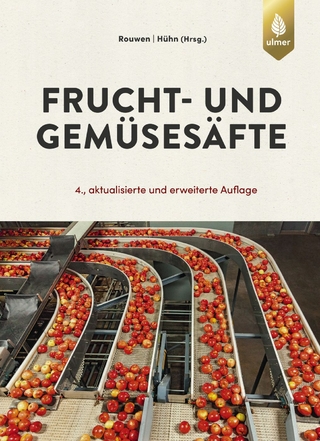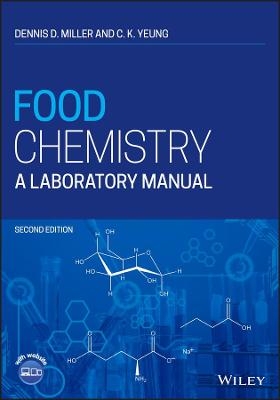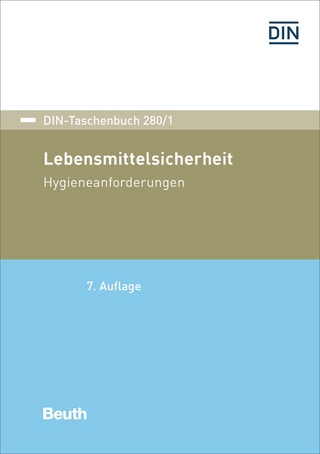
Quality Attributes and their Measurement in Meat, Poultry and Fish Products
Springer-Verlag New York Inc.
978-1-4613-5906-7 (ISBN)
1 Introduction to quality attributes and their measurement in meat, poultry and fish products.- 1.1 Introduction.- 1.2 Color.- 1.2.1 Importance.- 1.2.2 Variability and measurement.- 1.3 Juiciness and/or water-binding.- 1.3.1 Importance.- 1.3.2 Effects of variability and measurement.- 1.4 Flavor.- 1.4.1 Importance.- 1.4.2 Variability.- 1.4.3 Physiology and psychology of flavor/aroma.- 1.4.4 Specific flavors/odors.- 1.4.5 Flavor and aroma problems.- 1.5 Tenderness.- 1.5.1 Importance.- 1.5.2 Some factors influencing tenderness and its measurement.- 1.6 Microbial problems.- 1.6.1 Importance.- 1.6.2 Measurement.- 1.7 Additives and residues.- 1.7.1 Additives.- 1.7.2 Residues.- 1.8 Contributions of meat to human nutrition.- 1.8.1 Proteins and essential amino acids.- 1.8.2 Fats and essential fatty acids.- 1.8.3 Vitamins.- 1.8.4 Minerals.- 1.9 Summary.- References.- Appendix 1.1.- Appendix 1.2.- 2 Color — its basis and importance.- 2.1 Introduction.- 2.1.1 Retail importance of meat color.- 2.2 Myoglobin and its derivatives.- 2.2.1 Myoglobin concentration in muscle.- 2.3 Factors affecting fresh meat color stability.- 2.3.1 Oxygen tension.- 2.3.2 Bacteria.- 2.3.3 Vacuum-packaging.- 2.3.4 Packaging with oxygen-permeable films.- 2.3.5 Modified-atmosphere packaging.- 2.3.6 Effects of pH.- 2.3.7 Temperature.- 2.4 Dark-cutting beef and related dark color problems.- 2.4.1 Characteristics of dark-cutting meat.- 2.4.2 Mechanism by which pH affects color.- 2.4.3 Changes occurring after death.- 2.4.4 Shelf-life of high pH meat.- 2.4.5 Vacuum packaging.- 2.4.6 Minimizing dark-cutters by management.- 2.4.7 Dark, coarse band in beef ribs.- 2.5 Pale, soft, exudative (PSE), porcine stress syndrome (PSS) and dark, firm, dry (DFD) pork’.- 2.5.1 Importance ofPSE, PSS and DFD pork.- 2.5.2Genetic basis.- 2.5.3 Influence of environmental factors.- 2.6 Enzymatic reduction of metmyoglobin.- 2.6.1 Enzymes involved.- 2.6.2 Variation among muscles.- 2.6.3 Other factors influencing color stability.- 2.7 Non-enzymatic reductants and inhibitors of oxidation.- 2.7.1 Effects of antioxidants and reductants.- 2.8 Irradiation and other antimicrobial treatments.- 2.8.1 Irradiation of fresh and cooked meats.- 2.8.2 Sulfites and meat color.- 2.9 Effects of light, freezing, salt and lipid oxidation on meat color.- 2.10 Cooked meat color.- 2.10.1 Pink color in cooked, uncured meat.- 2.11 Cured meat color.- 2.11.1 Role of nitrite.- 2.11.2 Action of cysteine and ascorbate.- 2.11.3 The cured meat pigment.- 2.11.4 Fading of cured meat color.- 2.12 Summary.- References.- 3 Colour of meat.- 3.1 Introduction to vision and colour.- 3.2 Colour vision.- 3.2.1 Colour measurement.- 3.2.2 Uniform colour space.- 3.3 Terminology.- 3.4 Instrumentation.- 3.4.1 Trichromatic colorimeters.- 3.4.2 Spectrophotometers.- 3.4.3 Sources of variation among colorimeters and spectrophotometers.- 3.5 Absorption, scatter and pigmentation.- 3.5. 1 Reflectance.- 3.5.2 Light scatter.- 3.6 Meat colour.- 3.6.1 Measurement procedure.- 3.6.2 Reflectance spectral changes in meat.- 3.6.3 Colour changes in beef.- 3.6.4 Differences between CIELAB and Hunter scales.- 3.7 Summary.- References.- 4 Juiciness - its importance and some contributing factors.- 4.1 Introduction.- 4.2 Subjective assessment of juiciness.- 4.3 Relationship to objective measurements.- 4.3.1 Juiciness vs. water-holding.- 4.3.2 The state of water.- 4.3 .3 Heating method and end-point temperature vs. juiciness.- 4.3.4 The role of fat.- 4.3.5 Relationship between drip losses and juiciness.- 4.3.6 Relationship between press fluid and juiciness.- 4.4 Factors influencing the juiciness of intact meat.- 4.4.1 Interference from other experimental and textural factors.- 4.4.2 Heating/cooking methods.- 4.4.3 Animal characteristics.- 4.4.4 Factors related to rigor development.- 4.4.5 Restructured meat.- 4.4.6 Processed meats.- 4.4.7 Marinaded meat.- 4.5 Conclusions.- References.- 5 Measurement of water-holding capacity and juiciness.- 5.1 Introduction.- 5.2 Composition and structure of meat.- 5.3 State of water in meat.- 5.4 Definition of water-holding capacity.- 5.5 General methodology.- 5.5.1 Applying no force.- 5.5.2 Applying external mechanical force.- 5.5.3 Applying thermal force.- 5.5.4 Choosing a method for measuring WHC.- 5.6 Influence of different factors on WHC.- 5.6.1 Evaporation losses.- 5.6.2 Drip losses.- 5.6.3 Filter paper press method (FPPM).- 5.6.4 Centrifugation methods for uncooked meat.- 5.6.5 Capillary volumeter method.- 5.6.6 Imbibing method.- 5.6.7 Cooking losses.- 5.7 Description of methods and evaluation.- 5.7.1 Drip loss determination.- 5.7.2 Determination of water-holding capacity using the filter paper press method (FPPM).- 5.7.3 Determination of water-holding capacity by centrifugation.- 5.7.4 Capillary volumeter measurements.- 5.7.5 Imbibing method.- 5.7.6 Cooking loss measurement.- 5.8 Meat products.- 5.8.1 Manufacturing of cooked sausage.- 5.8.2 Water-holding capacity of unheated batters.- 5.8.3 Water-holding capacity of heated batters.- 5.8.4 Measurement of water-holding capacity in sausage batters.- 5.8.5 Evaluation of methods.- 5.9 Conclusions about water-holding capacity measurements.- 5.10 Measurement of juiciness.- 5.10.1 Problems in evaluating juiciness.- 5.10.2 Evaluation of methods.- 5.11 Summary.- References.- 6 The chemical senses.- 6.1 Introduction.- 6.2 Anatomy and physiologyof the chemical senses: taste.- 6.2.1 Overview..- 6.2.2 Anatomy.- 6.2.3 Reception and transduction.- 6.3 Anatomy and physiology of the chemical senses: olfaction.- 6.3.1 Overview.- 6.3.2 Anatomy.- 6.3.3 Reception and transduction.- 6.4 Sensory responses to food: taste.- 6.4.1 Development of taste preference.- 6.4.2 Effects of aging.- 6.5 Sensory responses to food: olfaction.- 6.5.1 Development of olfactory preference.- 6.5.2 Effects of aging.- 6.6 Specific appetites.- 6.6.1 Salt.- 6.6.2 Amino acids and proteins.- 6.7 Chemosensory mixtures.- 6.8 Conclusions.- References.- Acknowledgements.- 7 Flavor and aroma chemistry.- 7.1 Introduction.- 7.2 Flavor precursors.- 7.3 The taste of meat.- 7.4 Meat aroma.- 7.4.1 Maillard reaction.- 7.4.2 Lipid reactions.- 7.4.3 Thiamin degradation.- 7.4.4 Role of nitrite in cured meat flavor.- 7.4.5 Volatiles and flavor.- 7.5 Summary.- References.- 8 Flavor and aroma - its measurement.- 8.1 Introduction.- 8.2 Difference tests.- 8.3 Descriptive flavor analysis.- 8.3.1 The flavor profile.- 8.3.2 Quantitative descriptive analysis.- 8.3.3 The spectrum method.- 8.4 Instrumental analysis.- 8.4.1 Extraction and concentration of flavor compounds.- 8.4.2 Selection of a concentration- extraction procedure.- 8.4.3 Gas chromatographic (GC) analysis.- 8.4.4 Sniffer-port analysis.- 8.4.5 Flavor analysis by HPLC.- 8.4.6 Piezo-electric crystals.- 8.5 Correlation between sensory analysis and gas chromatography.- 8.5.1 Principal component analysis.- 8.5.2 Factor analysis.- 8.5.3 Cluster analysis.- 8.5.4 Discriminant analysis.- 8.5.5 Regression and correlation.- 8.5.6 Response surface methodology.- 8.5.7 Neural networks.- 8.6 Analysis of an example data-set.- 8.6.1 Description of data.- 8.6.2 Statistical methods.- 8.6.3 Results of statistical analysis.- 8.7Summary.- References.- Acknowledgements.- 9 Species-specific flavors and odors.- 9.1 Introduction.- 9.2 Fatty acids in meats.- 9.2.1 Influence of cooking on the fatty acid composition of meat.- 9.2.2 Volatile free fatty acids and some other possible flavor compounds.- 9.2.3 Free fatty acids in meat.- 9.2.4 Branched-chain fatty acids (BCFAs).- 9.3 Subcutaneous and perinephric adipose tissue.- 9.4 Synthesis of branched-chain fatty acids.- 9.4.1 Effects of diet on synthesis of branched-chain fatty acids.- 9.4.2 Body secretions of branched-chain fatty acids by meat-producing animals.- 9.4.3 Odors and flavors of some selected fatty acids.- 9.4.4 Determination of the concentration of short-chain and branchedchain fatty acids.- 9.4.5 Measurement of alkylphenols and thiophenols.- 9.5 Other flavor or odor compounds localized in the fatty tissues.- 9.5.1 Sex odor or boar ‘taint’.- 9.5.2 Pathways for Cw .1. 16-steroid production.- 9.5.3 Thresholds and odors of the Cw .1. 16-steroids.- 9.5.4 Identification and quantification of the Cw .1. 16-steroids.- 9.5.5 Possible role of skatole.- 9.5.6 Isolation and quantification of skatole.- 9.6 Species-specific flavors.- 9.6.1 Lamb and/or mutton flavor.- 9.6.2 Goaty flavors and odors.- 9.6.3 Odors and flavors in pork.- 9.6.4 Beef and veal flavors and odors.- 9.6.5 Chicken- and turkey-specific flavors and odors.- 9.6.6 Fish-specific flavors and odors.- 9.6.7 ‘Gamey’ flavors and odors.- 9.7 Summary.- References.- 10 Flavor and aroma problems and their measurement in meat, poultry and fish products.- 10.1 Introduction.- 10.2 Oxidative rancidity/wanned over flavors.- 10.2.1 Lipid oxidation and meat quality.- 10.2.2 Inhibiting lipid oxidation.- 10.2.3 Effect of lipid oxidation on meat flavor.- 10.2.4 Catalysis of lipid oxidation inmeats.- 10.2.5 Measurement of lipid oxidation in meats.- 10.3 Species-specific flavors.- 10.4 Effects of differertt feeds on flavor and aroma.- 10.4.1 Lamb and mutton.- 10.4.2 Veal and beef.- 10.4.3 Pig meat.- 10.4.4 Fish.- 10.4.5 Poultry.- 10.4.6 Other species.- 10.5 ‘Gamey’ flavors.- 10.6 Off flavors due to sex condition.- 10.6.1 Boar odor or taint.- 10.6.2 Ram odor/flavor.- 10.6.3 Sex flavor/aroma in other species.- 10.7 Off-flavors from the environment.- 10.8 Processing-induced off-flavors.- 10.8.1 Irradiation flavor/odor.- 10.8.2 Retort flavor of canned meat.- 10.9 Off-flavors associated with microbial growth.- 10.9.1 Off-odors in fish caused by microbial growth.- 10.9.2 Off-odors and flavors in poultry associated with microbial growth.- 10.9.3 Off-odors and flavors produced in red meats by microbial growth.- 10.10 Summary.- References.- 11 Tenderness of meat, poultry and fish.- 11.1 Introduction.- 11.2 Pre-slaughter factors.- 11.2.1 Breed effects.- 11.2.2 Fatness.- 11.2.3 Sex effects.- 11.2.4 Growth promoters.- 11.2.5 Connective tissue.- 11.3 Slaughtering.- 11.4 Rigor development.- 11.4.1 Compositional and structural changes post-mortem.- 11.4.2 Temperature effects.- 11.4.3 Electrical stimulation.- 11.5 Muscle shortening.- 11.5.1 Relationship between muscle shortening and tenderness.- 11.5.2 Carcass suspension effects.- 11.5.3 Hot-deboning.- 11.5.4 Pre-rigor cooking.- 11.5.5 Pre-rigor cooling.- 11.5.6 Electrical stimulation.- 11.6 Ultimate pH effects.- 11.7 Effects of post-rigor storage.- 11.7.1 Mechanism of tenderisation.- 11.7.2 Pre-slaughter factors.- 11.7.3 Influence of muscle-shortening.- 11.7.4 Temperature.- 11.8 Artificial tenderisation.- 11.8.1 Proteolytic enzymes.- 11.8.2 Marinading.- 11.8.3 Pressure treatment.- 11.9 Control of tenderness.- 11.10Summary and research needs..- References.- 12 Meat texture measurement.- 12.1 Introduction.- 12.2 Why measure tenderness and when?.- 12.3 Subjective assessments.- 12.4 Objective assessments.- 12.4.1 Shear and biting systems.- 12.4.2 Compression methods.- 12.4.3 Tensile assessments.- 12.4.4 Penetration methods.- 12.4.5 Grinding methods.- 12.4.6 Fragmentation methods.- 12.5 Structural assessments.- 12.6 Chemical measures.- 12.7 Other methods.- 12.8 Samples.- 12.9 Standard protocols.- 12.10 Relationships between assessment methods.- 12.10.1 Between objective assessments.- 12.10.2 Between objective and subjective assessments.- 12.11 Conclusions.- References.- 13 Product acceptability evaluation.- 13.1 Introduction.- 13.2 Affective testing: testing for acceptance and preference.- 13.2.1 Scaling.- 13.2.2 Direct preference tests.- 13.3 Affective vs. analytical sensory testing.- 13.4 Subjects in acceptance tests: the usefulness of trained panels or experts in evaluating product acceptability.- 13.5 Relating sensory attributes to product acceptability.- 13.5.1 Hedonic scores and intensity of sensory attributes.- 13.5.2 Fat level as a determinant of acceptability.- 13.5.3 Factors that alter the relative importance of appearance, texture and flavor in consumer acceptance studies.- 13.6 Factors affecting the outcome of acceptance tests.- 13.6.1 Type of test or method 35213.6.2 Context effects.- 13.6.3 Design and control of experiments.- 13.7 Summary.- References.- 14 Microbial growth and its control in meat, poultry and fish.- 14.1 Introduction.- 14.2 Microbial contamination of muscle foods.- 14.2.1 Sources of contamination.- 14.2.2 Types of contamination.- 14.3 Microbial effects’on muscle foods.- 14.3.1 Spoilage.- 14.3.2 Foodborne illness.- 14.4 Control of microbial growth inmuscle foods.- 14.4.1 General.- 14.4.2 Decontamination.- 14.4.3 Modified-atmosphere storage.- 14.4.4 Biopreservation.- 14.5 Summary.- References.- 15 Rapid methods for measurement and enumeration of microbial contamination.- 15.1 Introduction.- 15.2 Improvements in sampling and sample preparation.- 15.2.1 Stomacher.- 15.2.2 Hand roller.- 15.2.3 Gravimetric Diluter or Diluflo.- 15.2.4 Other methods.- 15.3 Alternative methods for viable cell count procedure.- 15.3.1 The spiral plating method.- 15.3.2 The Isogrid system.- 15.3.3 The Petrifilm system.- 15.3.4 The Redigel system.- 15.3.5 The Direct Epifluorescent Filter Technique.- 15.3.6 Double-tube method.- 15.4 New methods for estimation of microbial populations.- 15.4.1 ATP estimation.- 15.4.2 Impedance and conductance measurements.- 15.4.3 Radiometry and calorimetry.- 15.4.4 Reflectance colorimetry.- 15.4.5 Limulus amoebocyte lysate and catalase tests.- 15.5 Miniaturized microbiological techniques.- 15.6 New and novel techniques.- 15.6.1 Vitek system.- 15.6.2 DNA probes.- 15.6.3 Target RNA probes.- 15.6.4 ELISA tests.- 15.6.5 The VIDAS immunoanalysis system.- 15.6.6 The polymerase chain reaction.- 15.6.7 Motility enrichment.- 15.6.8 Oxyrase enzyme system.- 15.7 Conclusions.- Acknowledgement.- References.- 16 Food analysis and chemical residues in muscle foods.- 16.1 Food analysis.- 16.1.1 Introduction.- 16.1.2 Protein.- 16.1.3 Fat.- 16.1.4 Moisture.- 16.1.5 Salt.- 16.1.6 Sugars.- 16.1.7 Nitrate.- 16.1.8 Nitrite.- 16.1.9 Nitrosamines.- 16.1.10 Cholesterol.- 16.1.11 Rapid test methods.- 16.2 Chemical residues.- 16.2.1 Introduction.- 16.2.2 Pesticide-residue analysis.- 16.2.3 Volatile environmental contaminants.- 16.2.4 Halophenols.- 16.2.5 Veterinary drug residue analysis.- 16.3 Summary.- Acknowledgements.- References.-17 The contributions of meat, poultry and fish to the health and well being of man.- 17.1 Introduction.- 17.2 Consumption of meat, poultry and fish.- 17.2.1 Factors affecting consumption of meat, poultry and fish.- 17.2.2 How consumption of meat, poultry and fish contributes to nutrient intake.- 17.3 The nutritional value of meat, poultry and fish.- 17.3.1 Criteria for what makes a food ‘nutritious’.- 17.3.2 Specific nutrients supplied by meat, poultry and fish.- 17.4 The role of meat, poultry and fish in human health.- 17.4.1 Meat, poultry and fish and their relationship to heart disease.- 17.4.2 Meat, poultry and fish and their relationship to cancer.- 17.5 Summary.- Acknowledgement.- References.
| Erscheint lt. Verlag | 23.3.2013 |
|---|---|
| Reihe/Serie | Advances in Meat Research ; 9 |
| Zusatzinfo | 55 Illustrations, black and white; XVII, 505 p. 55 illus. |
| Verlagsort | New York, NY |
| Sprache | englisch |
| Maße | 155 x 235 mm |
| Themenwelt | Technik ► Lebensmitteltechnologie |
| ISBN-10 | 1-4613-5906-6 / 1461359066 |
| ISBN-13 | 978-1-4613-5906-7 / 9781461359067 |
| Zustand | Neuware |
| Haben Sie eine Frage zum Produkt? |
aus dem Bereich


